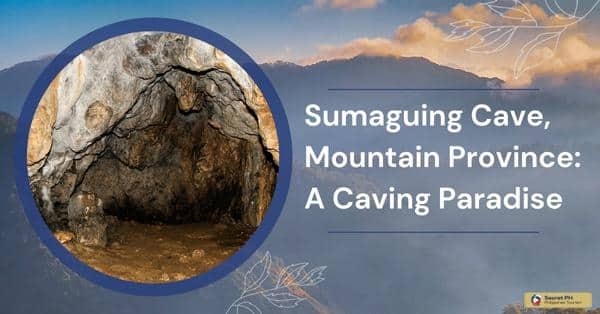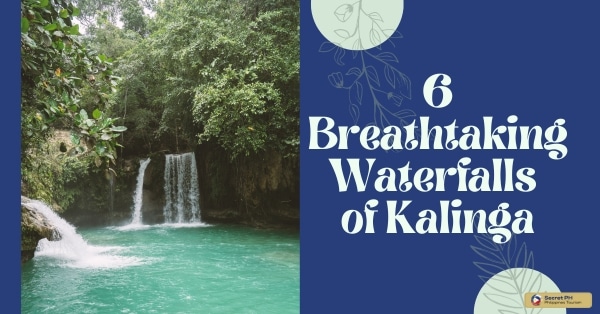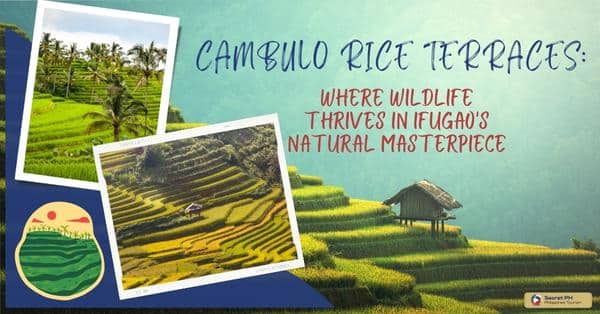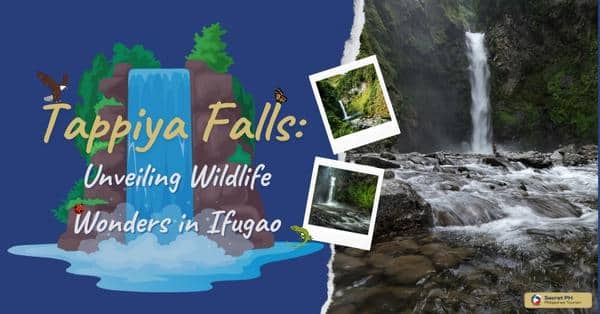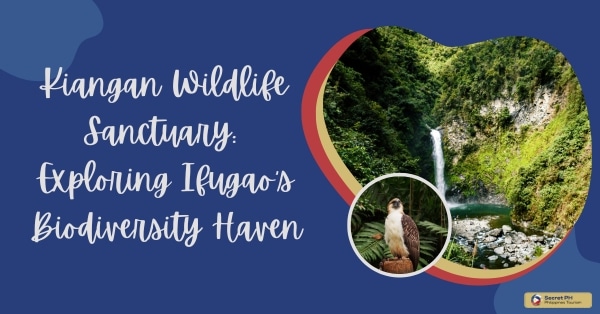The Philippines is home to some of the most stunning natural landscapes and wildlife in the world. Its unique biodiversity, with over 10,000 species of plants and animals, makes it one of the top destinations for ecotourism.
The National Parks of the Philippines are home to a diverse array of flora and fauna and play an essential role in protecting the country’s natural treasures. From the stunning beaches of El Nido to the majestic mountains of Mount Pulag, the Philippines offers a wealth of natural beauty waiting to be explored.
This guide will provide an overview of the importance of protecting the national parks in the Philippines, highlight its biodiversity, introduces visitors to some of the top national parks they can explore, and offer helpful tips for visiting these incredible destinations.
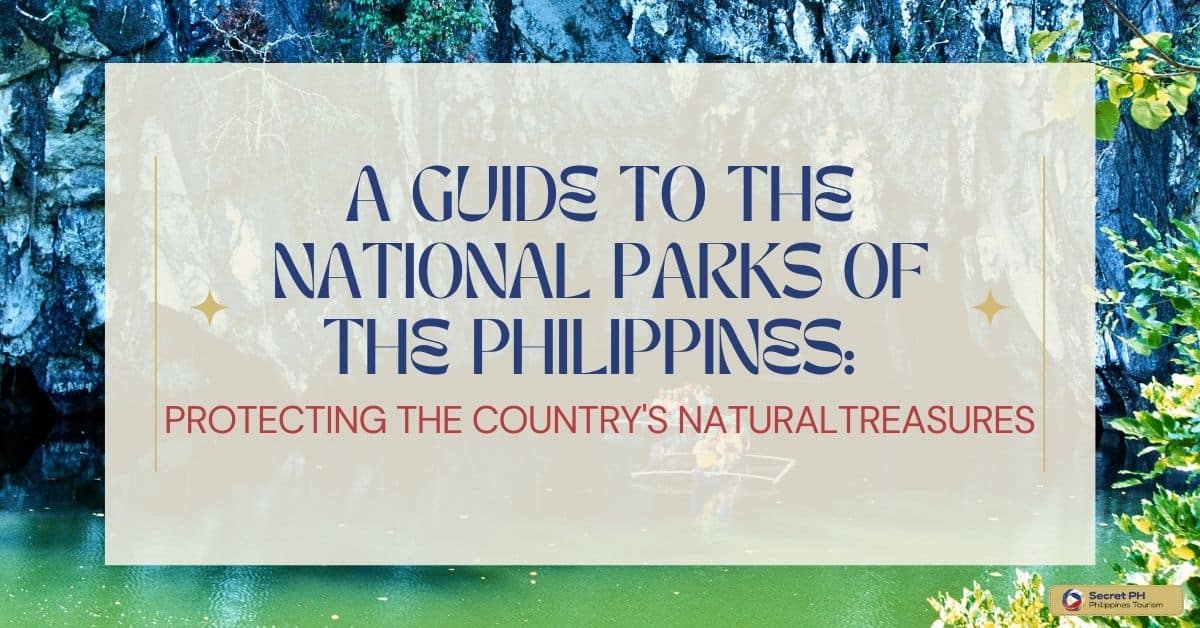
The Importance of Protecting Natural Treasures
Protecting natural treasures is crucial for the sustainability of our planet and the well-being of all its inhabitants. Natural treasures provide essential resources such as clean air and water, food, and medicine.
They also play a crucial role in regulating the climate and providing habitats for a diverse range of species. However, human activities such as deforestation, pollution, and over-exploitation of resources have put immense pressure on natural treasures, causing irreversible damage to ecosystems and biodiversity.
Furthermore, natural treasures are an essential part of our cultural and spiritual heritage. They hold great value and meaning for local communities and provide opportunities for recreation, education, and tourism.
The protection of natural treasures is not only necessary for their ecological significance but also for their cultural and economic importance. Sustainable management and conservation efforts are crucial to ensure that these natural treasures are preserved for future generations to enjoy and benefit from.
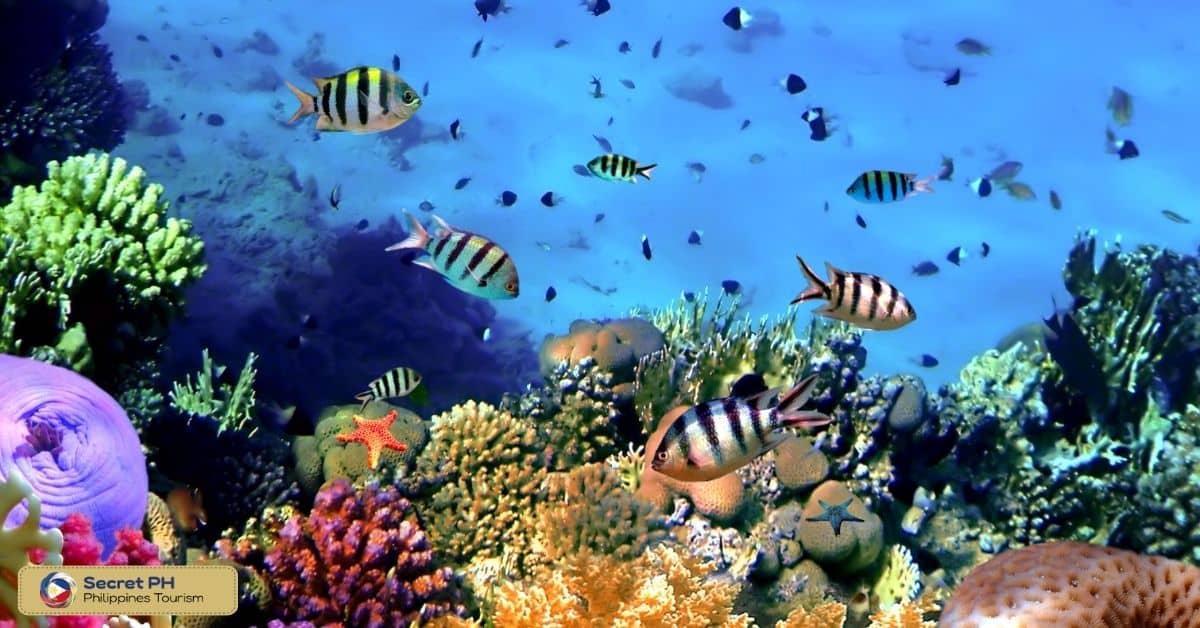
Biodiversity in the National Parks of the Philippines
The Philippines is home to some of the most beautiful national parks in the world. These parks are not only breathtaking in their natural beauty, but are also home to a diverse range of flora and fauna, making them important centers of biodiversity. In this section, we will delve deeper into the biodiversity of the national parks in the Philippines, and examine why it is so important to protect them.
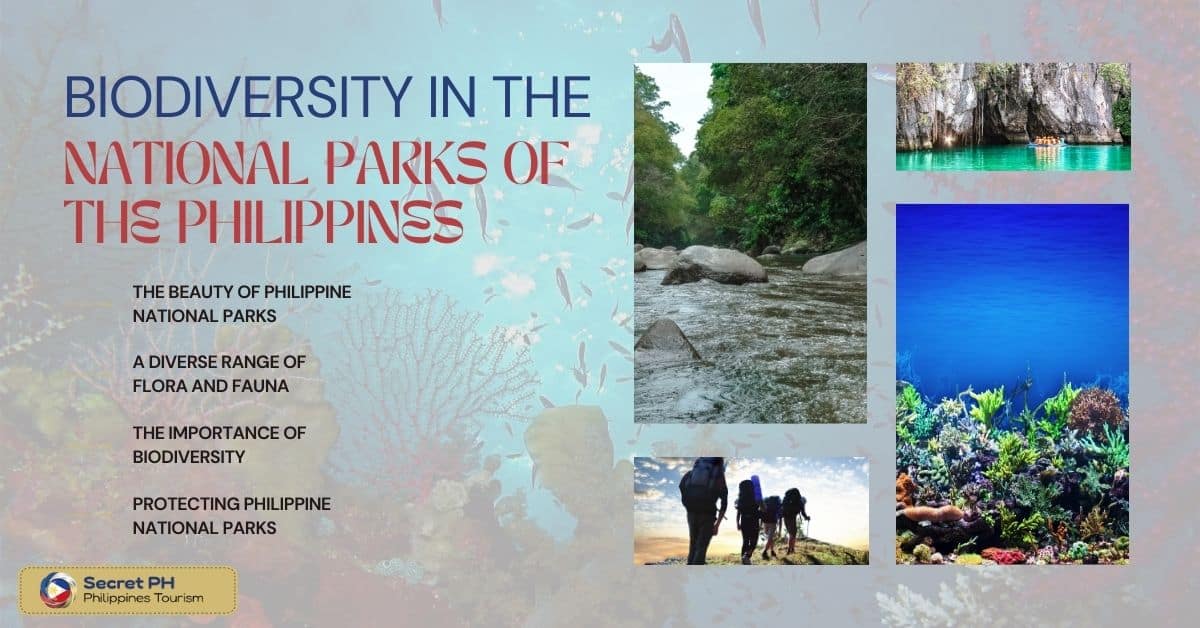
The Beauty of Philippine National Parks
The national parks of the Philippines are truly spectacular. From the crystal-clear waters of El Nido to the towering peaks of Mount Apo, these parks offer something for everyone. However, it is not just their natural beauty that makes them special; it is the fact that they are home to some of the most diverse ecosystems on the planet.
A Diverse Range of Flora and Fauna
The national parks of the Philippines are home to an incredible variety of plant and animal species. These range from tiny insects and reptiles to huge mammals and towering trees. Some of the most iconic examples include the Philippine eagle, the tarsier, and the palm civet.
The Importance of Biodiversity
Biodiversity is incredibly important for a number of reasons. Firstly, it helps to maintain the health and stability of ecosystems. Different species play different roles within an ecosystem, and the removal of just one species can have far-reaching effects.
Secondly, biodiversity has enormous economic and cultural value. Many of the plants and animals found in the national parks of the Philippines are used for food, medicine, and traditional cultural practices.
Protecting Philippine National Parks
Given the immense importance of biodiversity, it is crucial that we take steps to protect the national parks of the Philippines. This can be done through a number of measures, including increased regulation of activities that could harm the environment, investment in sustainable tourism that benefits both visitors and local communities, and education and awareness-raising programs about the importance of biodiversity.
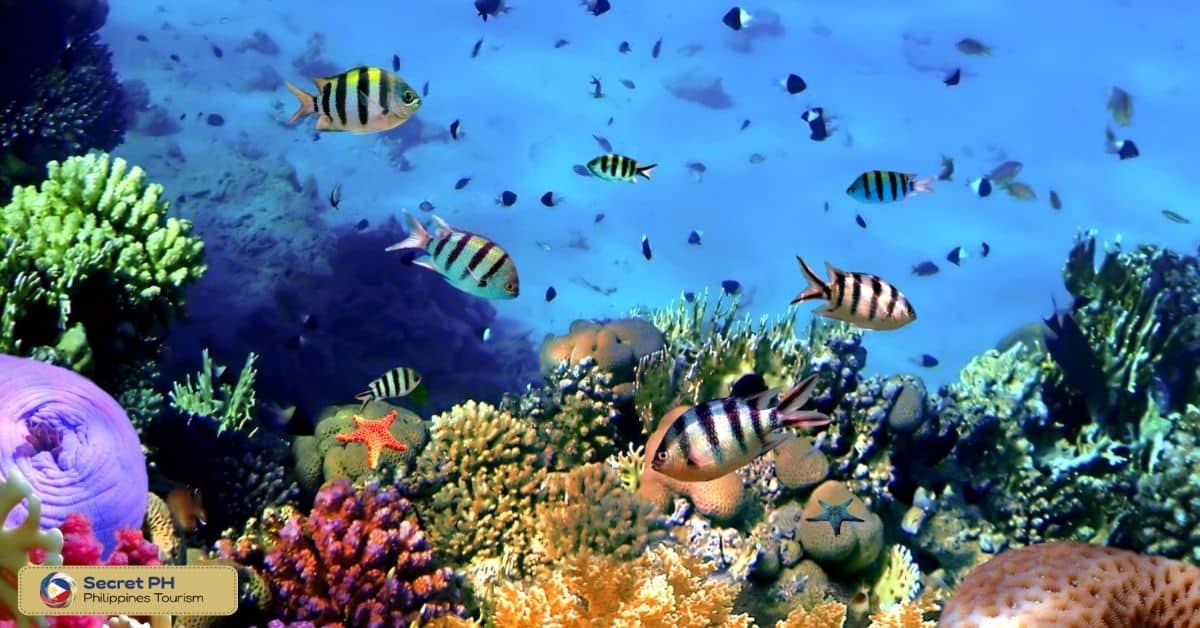
Top National Parks to Visit in the Philippines
The Philippines is popularly known for its beaches, scenic islands, and diverse marine life. However, the country also has some of the most stunning national parks that are a must-visit for nature lovers.
From volcanoes and craters to waterfalls and caves, the national parks in the Philippines offer a unique and unforgettable experience. Here are some of the top national parks to explore in the Philippines.
1. Puerto Princesa Underground River
Puerto Princesa Underground River is one of the most popular national parks in the Philippines. Located in Palawan, this 8 km-long river winds through stunning limestone formations and caves filled with bats, monkeys, and turtles. The park is also home to diverse marine life and coral reefs, making it a great spot for snorkeling and swimming.
Activities to do:
- Take a guided boat tour through the underground river.
- Watch out for bats and other wildlife that inhabit the area.
- Stop by the Sabang Mangrove Forest for a nature walk and birdwatching.
- Visit the nearby Ugong Rock Adventures for ziplining and caving.
- Explore the nearby beaches and snorkel spots in the area.
Best time to visit:
The best time to visit the Puerto Princesa Underground River is during the dry season. The dry season runs from November to April and offers the best weather conditions for outdoor activities.
Address: Puerto Princesa, Palawan
Management: Department of Environment and Natural Resources
For directions, click here.
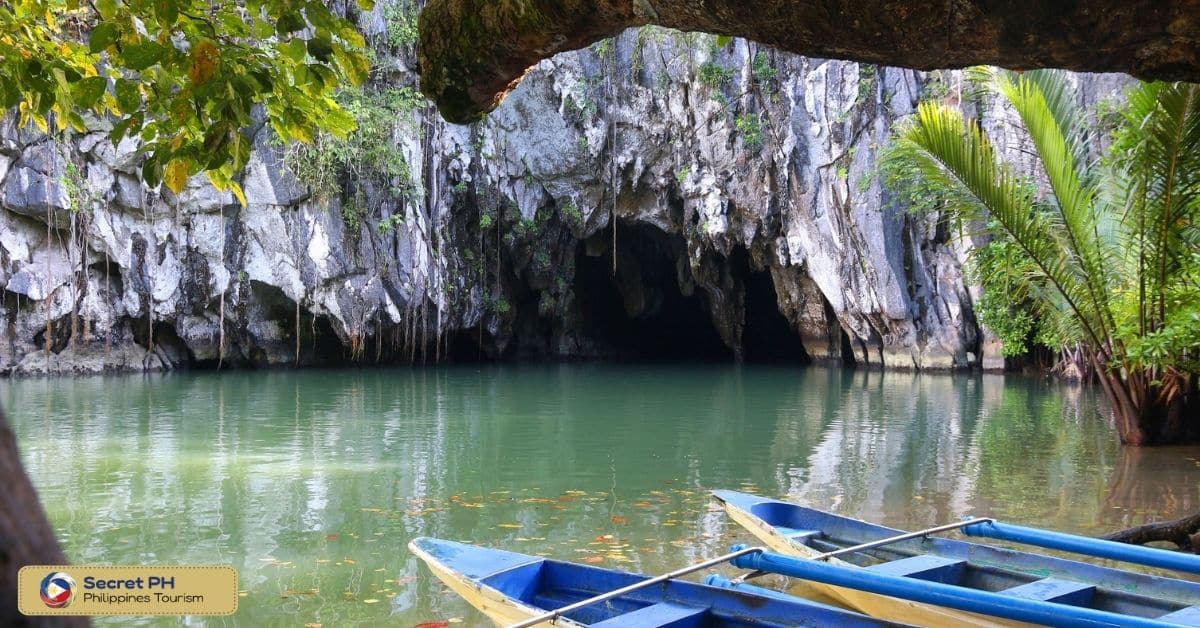
2. Lake Danao National Park
Lake Danao National Park is a must-visit for nature lovers and outdoor enthusiasts looking to explore the unique landscapes of the Philippines. Located in Leyte, this park features soaring mountains, lush forests, and crystal-clear lakes surrounded by stunning limestone formations. It is home to dozens of rare species of plants and animals, making it a great destination for bird watching and wildlife spotting.
Activities to do:
- Enjoy a picnic by the lake’s shore.
- Go on a boat ride to explore the lake.
- Hike through the park’s trails and admire the lush greenery.
- Have a refreshing swim in the lake’s crystal clear waters.
- Try kayaking or paddleboarding on the lake.
Best time to visit: The best time to visit Lake Danao National Park is during the dry season from November to April. During this time, the weather is cooler, and the skies are clearer, providing ideal conditions for outdoor activities.
Location: Leyte
For directions, click here.
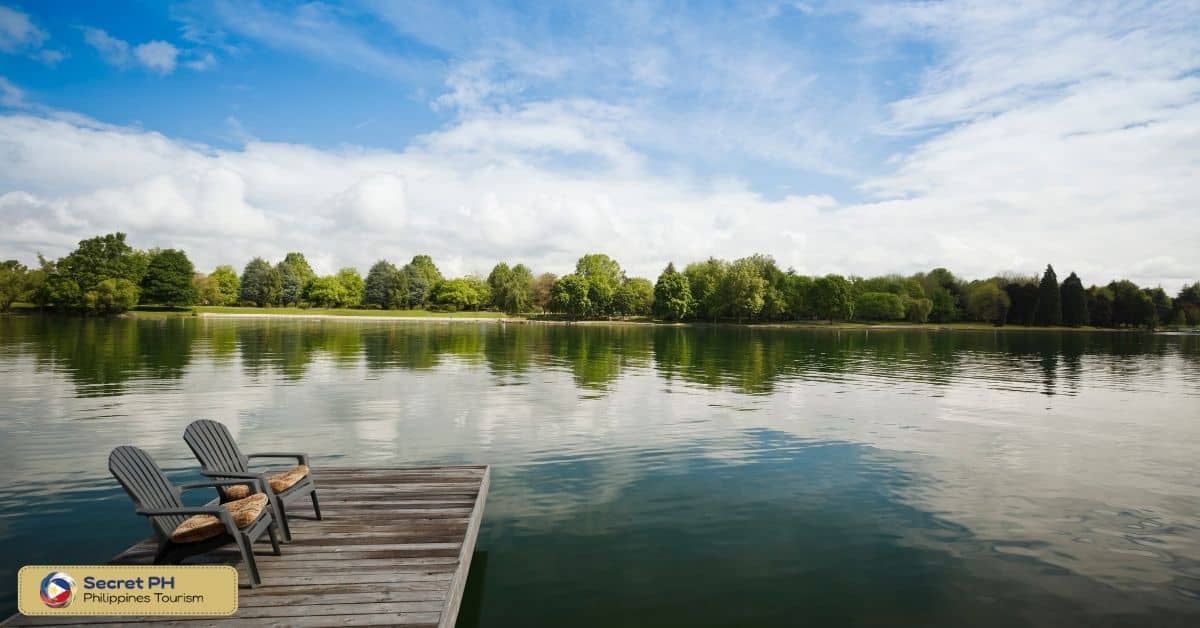
3. Minalungao National Park
Minalungao National Park is a stunning outdoor destination located in Nueva Ecija. This park features lush green rice terraces, towering limestone formations, and majestic waterfalls carved into the cliffs. It also has an incredible array of wildlife, including several rare species of plants and animals. The park also offers some of the best views in the region, making it a perfect spot for photography and sightseeing.
Activities to do:
- Take a bamboo raft ride down the river.
- Go spelunking in the park’s cave system.
- Hike the park’s trails and enjoy the scenic views.
- Rent a kayak and paddle around the river.
- Camp overnight and stargaze in the park’s designated camping areas.
Best time to visit: The best time to visit Minalungao National Park is during the dry season, which runs from November to May. The weather during this time is usually sunny and dry, which is ideal for outdoor activities.
Address: General Tinio, Nueva Ecija, Philippines
Management: Department of Environment and Natural Resources
For directions, click here.
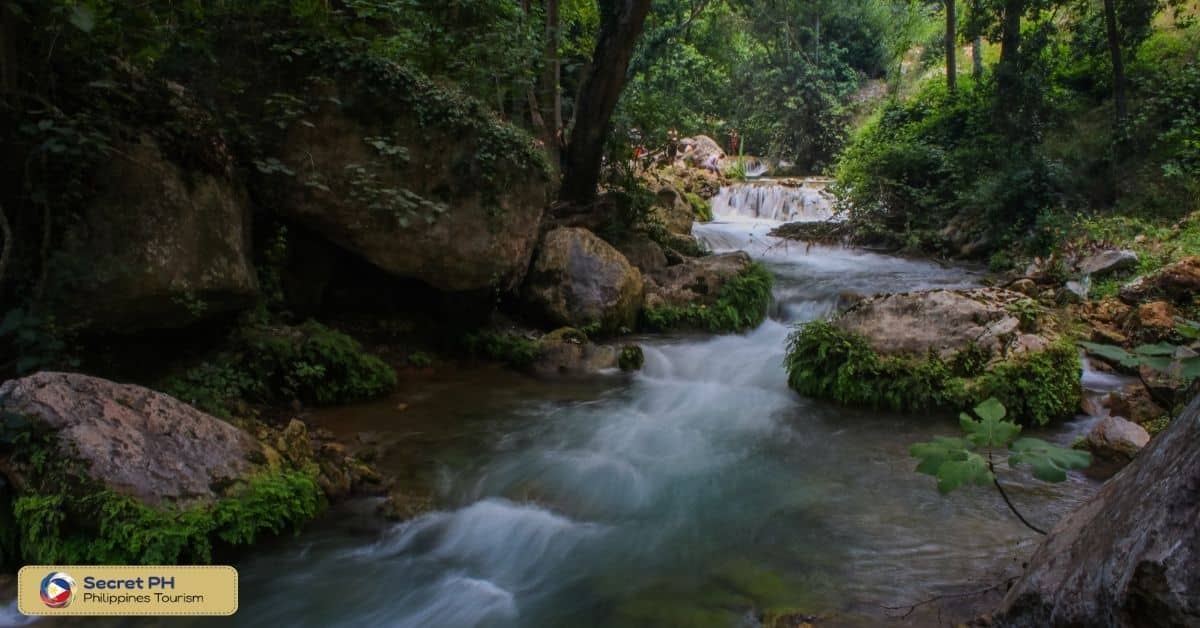
4. Mt. Bandilaan National Park
Mt. Bandilaan National Park is a must-visit destination located in Siquijor. This park features lush rainforests, stunning limestone formations, and towering mountains that offer some of the best views in the region. It is home to dozens of rare species of plants and animals, making it a great spot for bird watching and wildlife spotting. There is also an observation deck that offers panoramic views of the entire park.
Activities to do:
- Trekking to the summit of Mt. Bandilaan for panoramic views.
- Explore the 19th-century Spanish-era ruins of the San Isidro Labrador Church.
- Take a dip in the park’s natural springs and waterfalls.
- Enjoy a picnic with family and friends in the park’s picnic area.
- Go on a bike tour or rent an ATV to explore the park’s trails.
Best time to visit: The best time to visit Mt. Bandilaan National Park is during the dry season, which is from December to May. During this time, the weather is generally sunny, with less rainfall and comfortable temperatures.
Address: 5HRM+FXP, Lazi, Siquijor
Opening Hours: 6 AM–7 PM
For directions, click here.
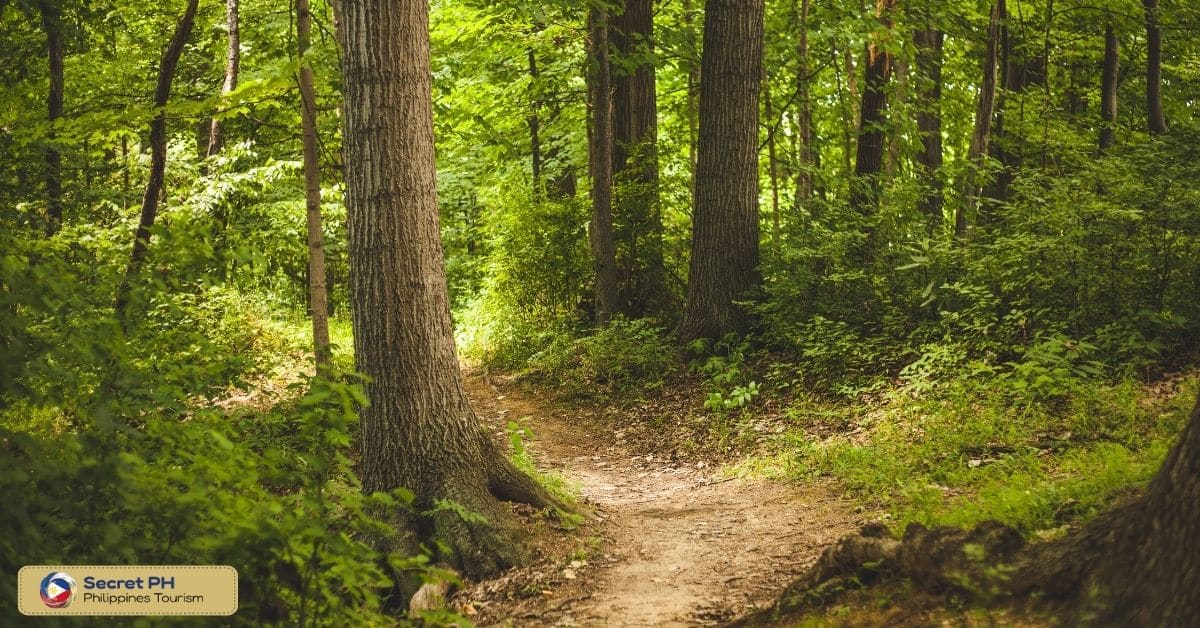
5. Biak na Bato National Park
Biak na Bato National Park is a stunning outdoor destination located in San Miguel, Bulacan. This park features lush rainforest, majestic waterfalls, and spectacular limestone formations carved into the cliffs. It is home to dozens of rare species of plants and animals, making it a great spot for bird watching and wildlife spotting.
Visitors can take boat tours along the river, explore the caves and hidden waterholes, or go trekking through the jungle. The park also offers some of the best in the region, making it the perfect spot for photography and sight.
Activities to do:
- Have a picnic in the park’s designated picnic areas.
- Go on a bird-watching expedition.
- Go camping in the park’s designated camping sites.
- Try rock climbing in the park’s various rock formations.
Best time to visit: The best time to visit Biak na Bato National Park is during the dry season from November to May. This is when the weather is most favorable for outdoor activities like trekking and river tubing.
Address: Barangay, Proper, San Miguel, 3011 Bulacan
Opening Hours: 8 AM–5 PM
Management: Department of Environment and Natural Resources
For directions, click here.
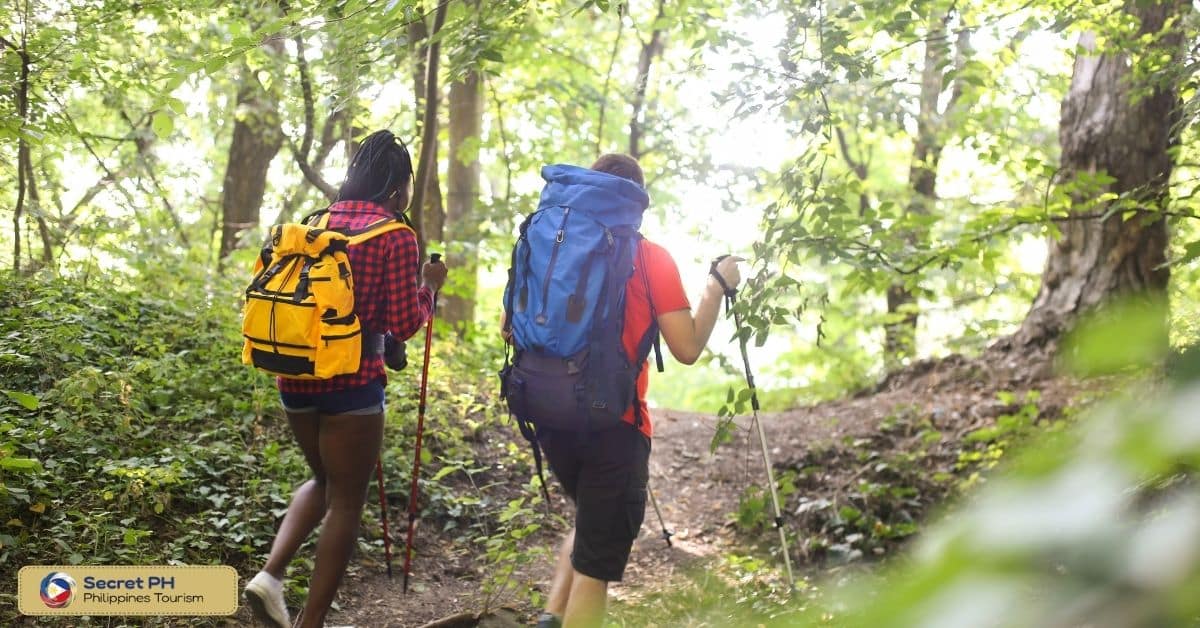
6. Mt. Iglit-Baco National Park
Mt Iglit-Baco National Park is a stunning outdoor destination located in Occidental Mindoro. This park features lush rainforest, majestic waterfalls, and spectacular limestone formations carved into the cliffs.
It is home to dozens of rare species of plants and animals, making it a great spot for bird watching and wildlife spotting. The park also offers some of the best views in the region, making it a perfect spot for photography and sightseeing.
Activities to do:
- Wildlife viewing, especially the Tamaraw buffalo.
- Birdwatching in the forest.
- Camping in the designated campsites.
- Picnicking in the park’s designated areas.
- Visiting the Mangyan settlement to learn about their culture and traditions.
Best time to visit: The best time to visit the park is during the dry season, from December to May. During this time, the weather is typically sunny and clear, making it ideal for outdoor activities.
Location: Mindoro
Management: Department of Environment and Natural Resources
For directions, click here.

7. Victoria (Casamata) National Park
Victoria (Casamata) National Park is a must-visit destination located in Abra. This park features lush rainforest, stunning limestone formations, and towering mountains that offer some of the best views in the region. It is home to dozens of rare species of plants and animals, making it a great spot for bird watching and wildlife spotting.
Activities to do:
- Hiking through the park’s lush forests and mountain trails.
- Enjoying a picnic at one of the park’s scenic spots.
- Taking a scenic drive through the park’s winding roads.
- Birdwatching and wildlife spotting, including the park’s famous quetzals.
- Mountain biking along the park’s many trails.
Best time to visit: The best time to visit Victoria (Casamata) National Park is during the dry season, from December to April. During this time, the weather is usually sunny and dry, making it perfect for hiking and outdoor activities.
Address: HJRC+FHM, Bangued, Abra
Opening Hours: 8 AM–5 PM
Management: Department of Environment and Natural Resources
For directions, click here.
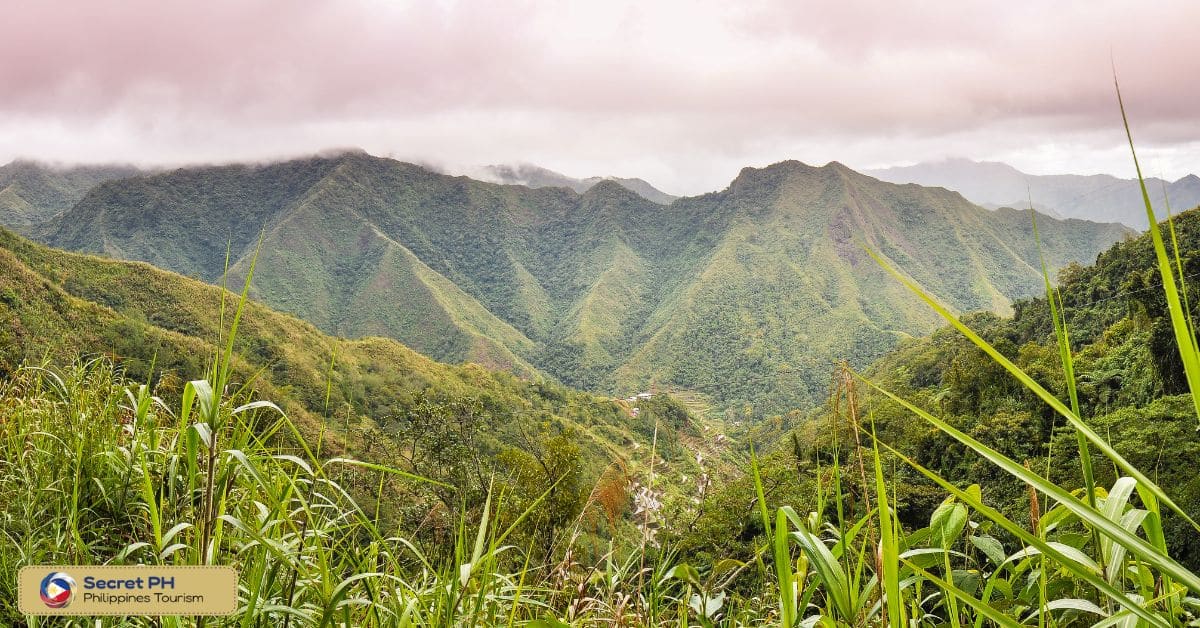
8. Samar Island Natural Park
Samar Island Natural Park is a stunning outdoor destination located in the Visayas region of the Philippines. This park features lush rainforests, majestic waterfalls, and spectacular limestone formations carved into the cliffs. The park also offers some of the best views in the region, making it a perfect spot for photography and sightseeing.
Activities to do:
- Trekking through the dense rainforest trails.
- Camping in designated areas to experience the park’s nocturnal beauty.
- Swimming in the pristine waters of the park’s natural pools and waterfalls.
- Birdwatching to spot rare and endemic species.
- Rock climbing in the limestone cliffs.
Best time to visit: The best time to visit Samar Island Natural Park is during the dry season from November to May. This period is characterized by sunny weather with fewer chances of rainfall.
Address: 26P6+QVC, Maslog, Eastern Samar
Management: Department of Environment and Natural Resources
For directions, click here.
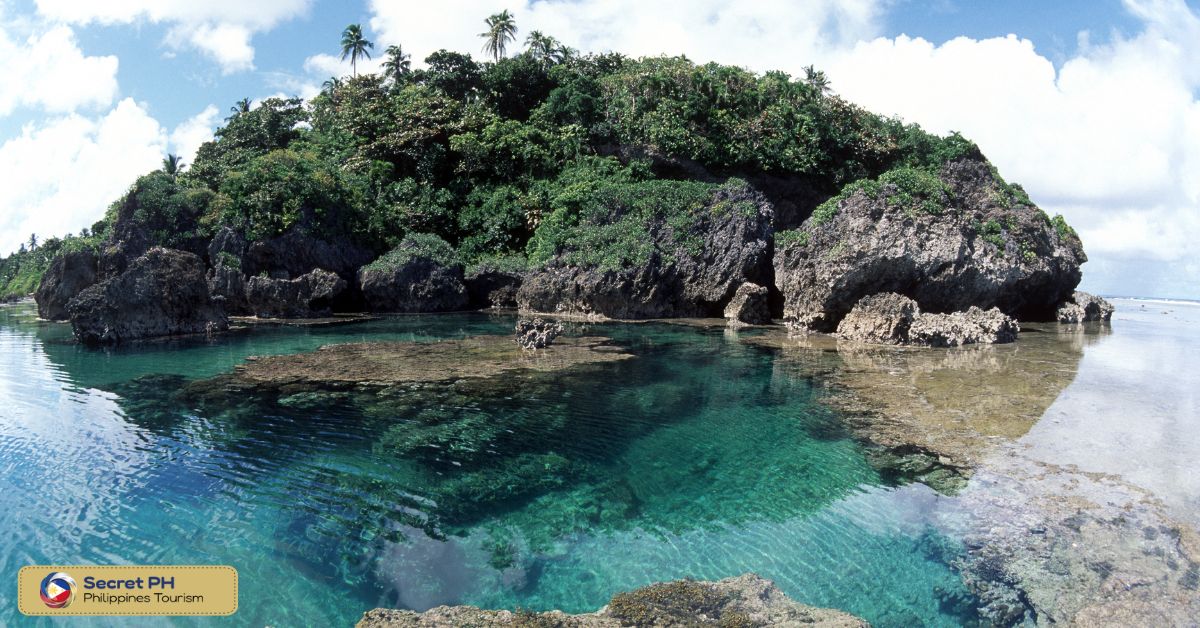
9. Mount Pulag National Park
Mount Pulag National Park is a stunning outdoor destination located in Benguet. This park features lush forests, towering mountains, and spectacular views of the Cordillera mountain range.
It is home to dozens of rare species of plants and animals, making it a great spot for bird watching and wildlife spotting. Visitors can take cable car rides up to the summit, explore the hidden caves and waterfalls, or go trekking through the jungle.
Activities to do:
- Trekking to the summit of Mount Pulag.
- Camping at the summit to see the sea of clouds.
- Visiting the Ambangeg, Akiki, and Tawangan trails.
- Viewing the famous dwarf bamboo grassland.
- Witnessing the sunrise and sunset from the summit.
Best time to visit: The best time to visit Mount Pulag National Park is from February to April and from October to December. During these months, the weather is dry and cool, with clear skies and less chance of rain.
Address: HVXX+3C5, Kabayan, Benguet
Phone: +63949 822 3922
For pictures, booking, and more information, click here.
For directions, click here.

10. Tubbataha Reef Natural Park
Tubbataha Reef Natural Park is a must-visit destination located in Palawan. This park features miles of pristine coral reefs, crystal clear waters, and some of the best diving spots in the world.
It is home to dozens of rare species of plants and animals, making it a great spot for snorkeling and scuba diving. Visitors can explore the hidden caves and shipwrecks, spot rare species of sea life, or go kayaking around the reef.
Activities to do:
- Go diving or snorkeling to explore the stunning coral reefs.
- Take a boat tour around the park to see its diverse marine life.
- Take a sunset cruise and enjoy the park’s natural beauty as the sun goes down.
- Go on a night dive to see the park’s nocturnal marine life.
- Take a photography tour to capture the park’s stunning scenery and wild
Best time to visit: The best time to visit Tubbataha Reef Natural Park is from March to June when the weather is dry and the sea conditions are calm.
Location: Cagayancillo, Palawan, Philippines
For directions, click here.
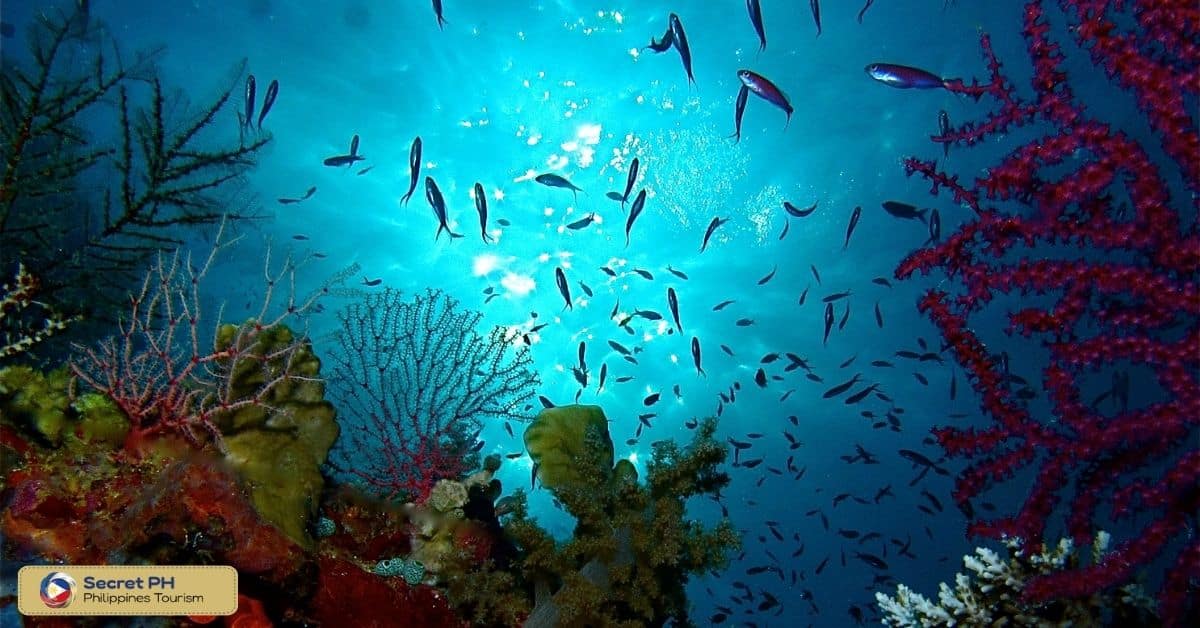
Conservation Efforts in the National Parks
The Philippines is home to some of the world’s most beautiful national parks. These areas are ideal for outdoor activities like camping, hiking, and bird watching, as well as being an important refuge for endangered species.
Conservation efforts in these national parks are essential for preserving their beauty and biodiversity. This article will provide information on the conservation efforts being taken in the Philippines’ national parks.
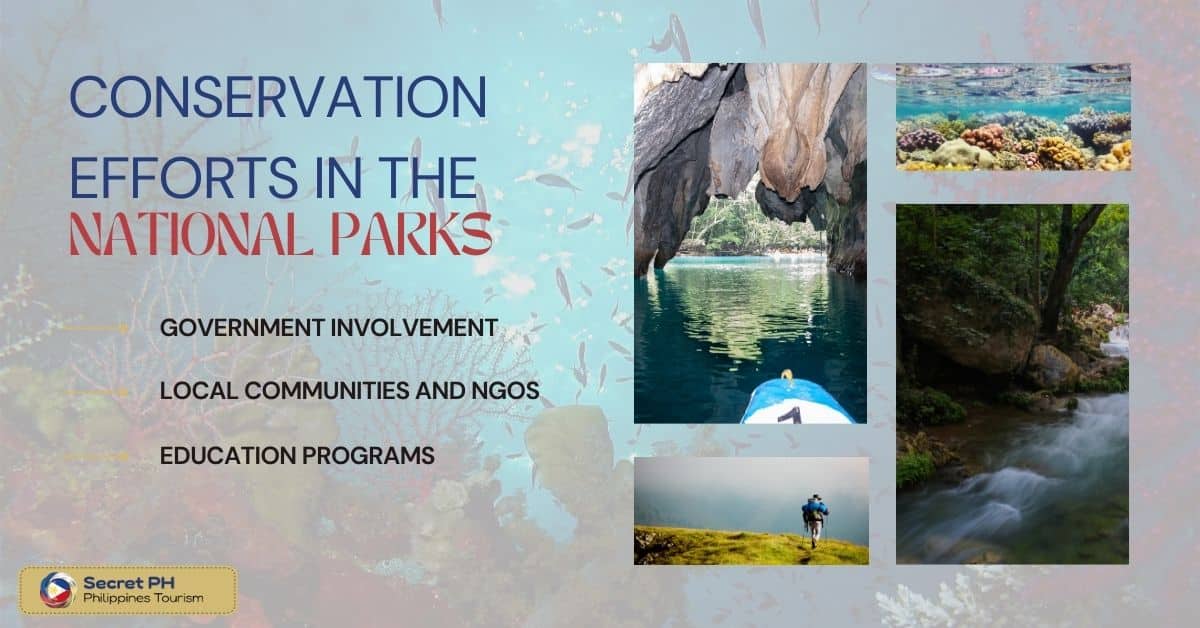
Government Involvement
The government of the Philippines is heavily involved in preserving and protecting its national parks. The Department of Environment and Natural Resources (DENR) is responsible for managing, protecting, and conserving these areas.
They have established areas as protected lands or marine sanctuaries, and they have created laws to protect the wildlife living in these areas. They also have programs that promote ecotourism, which helps support local communities while promoting sustainable tourism.
Local Communities and NGOs
The involvement of local communities is essential for protecting these national parks. Local people are often employed by the government or private companies to act as park rangers or guides.
Non-governmental organizations (NGOs) such as the World Wide Fund for Nature and the Philippine Biodiversity Conservation Foundation are also heavily involved in conservation efforts. They often collaborate with local communities to help protect threatened species, monitor illegal activities, and promote sustainable tourism.
Education Programs
One of the most important ways of preserving a national park is through education. The DENR and local NGOs have created programs that teach people about the importance of conservation, as well as how to protect the environment and its wildlife. These programs are often organized in schools or community centers, and they use various forms of media such as films, books, lectures, and workshops.
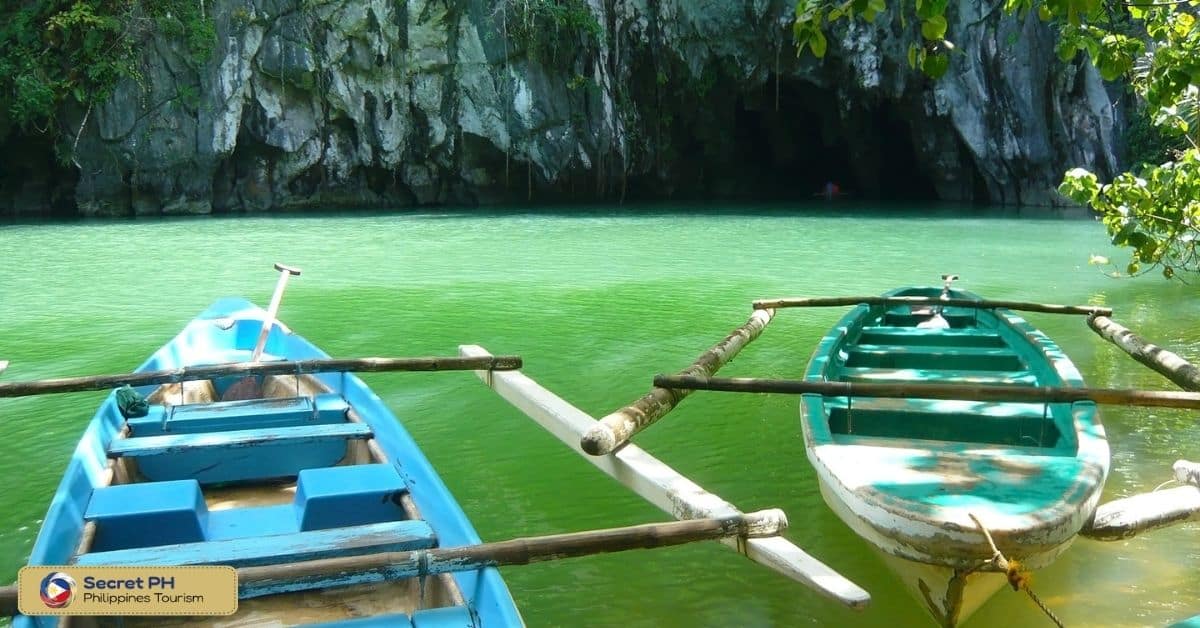
Tips for Visiting National Parks in the Philippines
When visiting a national park in the Philippines, it’s important to keep in mind certain tips that will help ensure a safe and enjoyable visit.
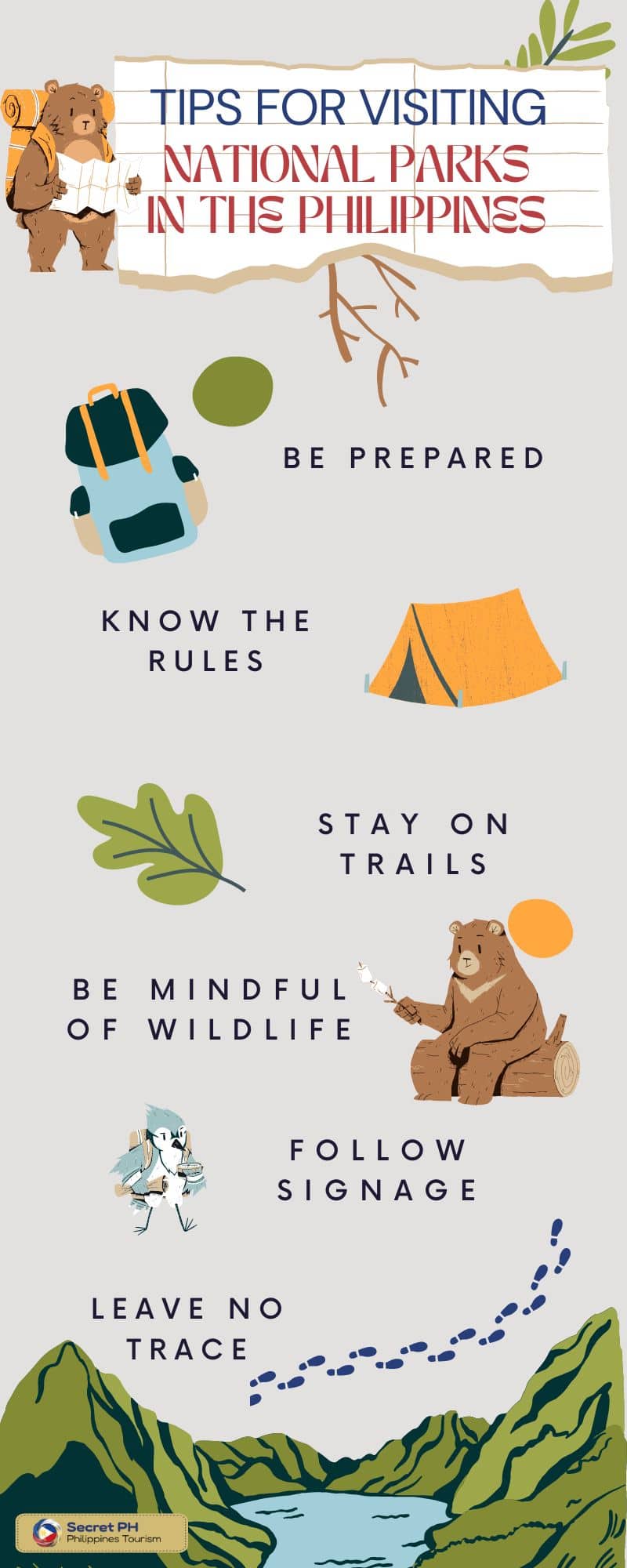
Be Prepared: Before visiting any national park, it’s important to make sure you are properly prepared for the trip. This means researching the park beforehand to have a better understanding of its features and amenities.
Additionally, it’s important to bring all necessary supplies such as food, water, and first aid items. It’s also recommended to check the weather forecast ahead of time and dress accordingly.
Know the Rules: Every national park has rules that must be followed in order to maintain the safety of visitors and protect the environment. Make sure to familiarize yourself with these rules before entering the park, and abide by them during your visit. This means respecting the wildlife, taking out all of your trash, and not disturbing any plants or animals.
Stay on Trails: When visiting a national park it’s important to stay on the designated trails in order to avoid potential hazards such as venomous snakes or wild animals. It’s also important to not pick any plants or disturb any animals, as this can cause damage to the environment.
Be Mindful of Wildlife: When visiting a national park it’s important to be mindful of the wildlife that inhabits the area. This means giving them plenty of space and not attempting to feed them. Additionally, make sure to keep a safe distance away from any wild animals you encounter.
Follow Signage: Most national parks in the Philippines have signs posted to designate certain areas as off-limits or dangerous. It’s important to obey these signs and not attempt to enter any of these restricted areas.
Leave No Trace: When visiting a national park, it’s important to leave the area as you found it. This means not littering and taking all of your trash with you when you leave. Additionally, make sure to not disturb any plants or animals in the area.
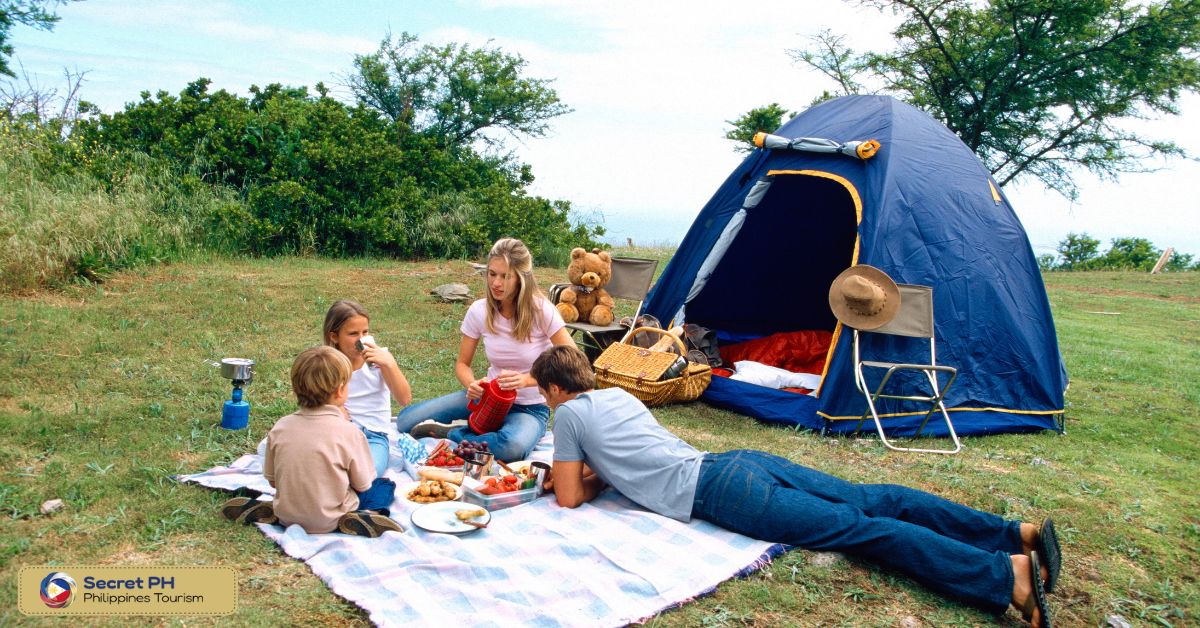
In conclusion
The Philippines is home to some of the world’s most beautiful national parks. These areas provide visitors with an opportunity to explore and appreciate nature in its purest form. It is important for visitors to be mindful of certain safety tips while visiting these parks, such as staying on designated trails and respecting wildlife.
Additionally, conservation efforts in these parks are essential for preserving their beauty and biodiversity. By following these tips and participating in conservation efforts, visitors can help ensure the longevity of these incredible national parks.


